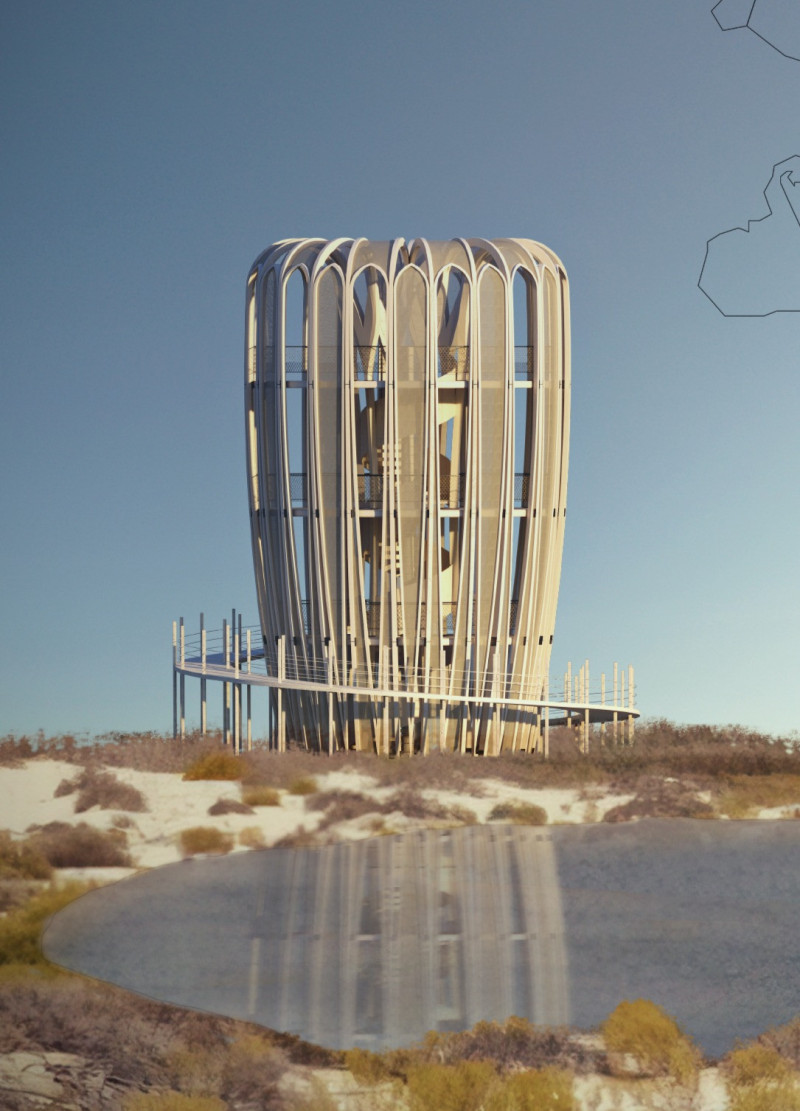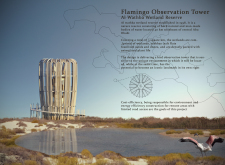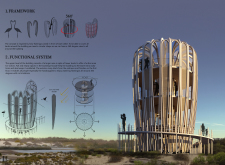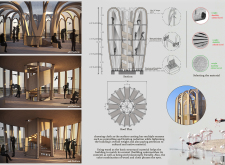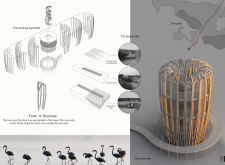5 key facts about this project
The Flamingo Observation Tower is located in the Al Wathba Wetland Reserve, about 40 kilometers southeast of Abu Dhabi. Established in 1998, the reserve spans 5 square kilometers and includes various landscapes such as wetlands, salt flats, fossilized sands, and dunes, rich in animal and plant life. The tower serves as a birdwatching point, taking inspiration from the social behavior of flamingos. Its circular design enables a full 360-degree view of the ecosystem, encouraging visitors to connect with the diverse wildlife around them.
Conceptual Framework
The design draws directly from how flamingos gather and stand close to one another. This behavior is reflected in the circular shape of the structure, providing expansive sightlines across the wetlands. The layout prioritizes accessibility with a ramp connecting the entrance to the first floor. This feature ensures that all visitors, including those with mobility challenges, can engage fully with the natural environment.
Functional Design
The upper level of the tower is designed to be larger than the lower levels, promoting a sense of openness and encouraging exploration. This thoughtful arrangement allows visitors to interact comfortably with their surroundings while providing an effective platform for observing wildlife. The facade consists of alternating solid and open sections, which promote airflow and help to control heat gain, contributing to a comfortable experience inside.
Material Choices
The materials for the Flamingo Observation Tower focus on sustainability and functionality. Cloth is used as a surface coating to manage solar radiation and keep the structure light. Wood forms the main framework, creating a connection with the natural setting. These choices support the ecological goals of the tower, ensuring it blends well with the wetland landscape.
Architectural Details
The design emphasizes both function and harmony with nature. The smooth curves and organic shapes of the building mimic the lines found throughout the wetlands. This approach helps create a natural transition between the constructed environment and the surrounding landscape. Additionally, features like boardwalks and flat footbridges invite visitors to wander through the reserve, immersing them in the unique ecosystem while allowing them to observe the interactions of local wildlife.


